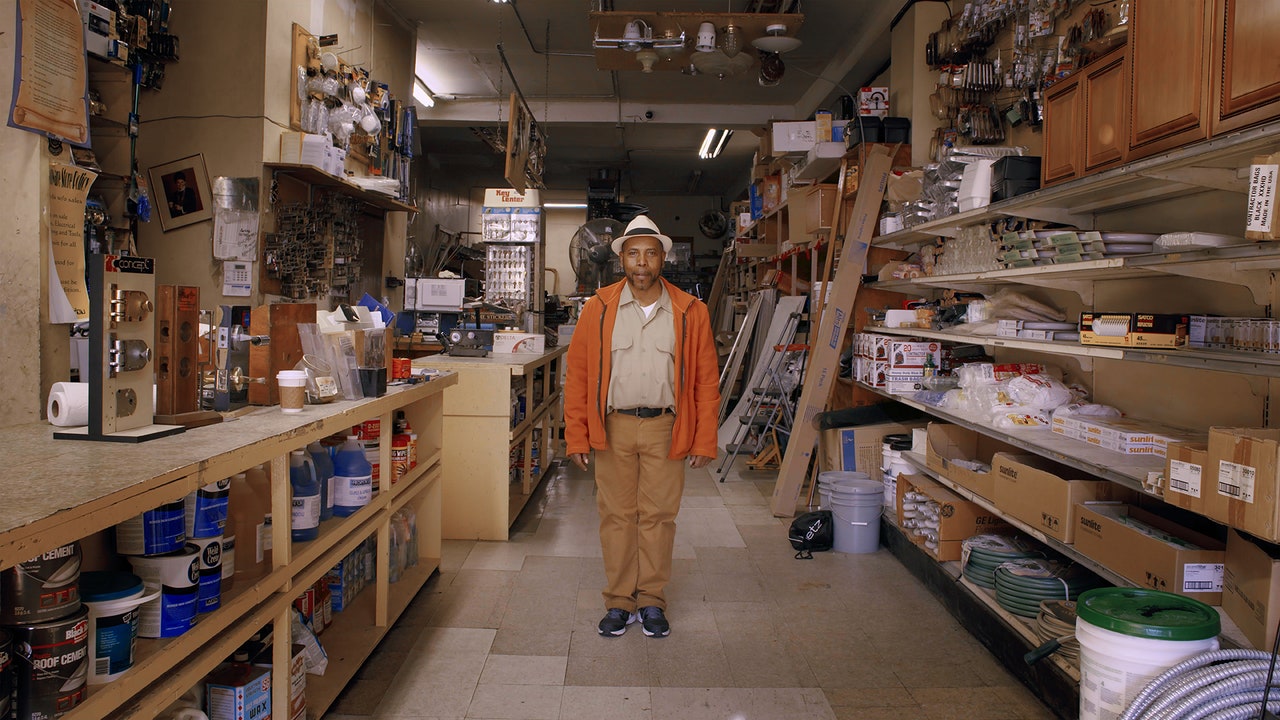For Peter Guppy, the owner of Prosperity Hardware, in Brooklyn, the American Dream is an organizing principle. “The American Dream gives you the opportunity to achieve things,” Guppy, who emigrated with his family from Trinidad, in the seventies, declares with unflinching conviction in “Peter’s Painting,” a short documentary from the Brooklyn-based production company Rota6 Films. Nestled between a driving school and a luxury apartment building in the rapidly gentrifying neighborhood of Bedford-Stuyvesant, the hardware store is aptly named for all the things Guppy’s mother imagined that the United States represented: prosperity, wealth, a good life. When his quest for these aims took Guppy down a new avenue of art collecting—which he calls both a hobby and an adventure—he came to be the owner of a painting with a murky provenance, one that he thought could be the work of a Russian master.
About a decade ago, Guppy’s friend Valeri, an immigrant from Russia, was going through a difficult financial period. Guppy wanted to help but was reluctant to offer a handout, so the two struck a deal for Guppy to buy a painting that Valeri had purchased at an open-air flea market in Moscow, in the nineties. With its sharp lines, red and yellow geometric shapes, and Cyrillic lettering roughly translating to “the fifth congress of the Russian Social Democratic Labor Party,” they thought it could be the work of Kazimir Malevich, the Kyiv-born avant-garde artist who was a pioneer of abstract art in the early twentieth century.
The film is shot almost entirely inside Prosperity Hardware. “When I’m in the hardware store, it’s like I’m in Peter’s mind,” Olivier Bernier, the filmmaker, told me. Just as the family’s business represented for Guppy’s mother the perceived good fortune of life in America, the painting represents it for Guppy. “In economics, you buy low and you sell high,” he says. “There’s money to be gained in art collecting.”
Convinced that the painting was “one-hundred-per-cent” real, Guppy sought to have it professionally authenticated, but struggled to be taken seriously as an art collector. It was Bernier and Tiffany Conklin, the founders of Rota6, who first heard about Guppy and his painting from a mutual friend and who set out to help him get the painting analyzed and, hopefully, turn it into the source of prosperity about which he had always dreamed. In the only scene set outside the hardware shop, Guppy delivers the painting to Art Analysis & Research, where Nica Gutman Rieppi, a professional art authenticator, examines it under a microscope, in search of identifying Malevichian details. Malevich’s work is known, for example, for perfectly straight lines, which he achieved by painting against a cardboard aid.
Back at the hardware shop, James Butterwick, a London art dealer specializing in Russian works, completes his own analysis of the painting. Flanked by hammers and foam paint rollers, Butterwick examines the painting through his round-framed glasses and declares that the chances the piece is real are “on a par with winning the lottery.” In his view, the coupling of the painting’s slight imperfections, which deviate from Malevich’s famously precise edges, with its dubious provenance is an undeniable red flag, but he stops short of classifying the work as a counterfeit.
When Bernier first set out to make a film about Guppy and his family’s business, he imagined a project about the effects of gentrification. But, in the process, he discovered an unexpected story, about Guppy’s appreciation for the irrefutable power of art. Guppy’s painting is something to believe in, whether or not it’s real, he told me: “We place value in it, but it’s really what we believe it to be.” For his part, Guppy has no doubt that his painting is the real thing.
